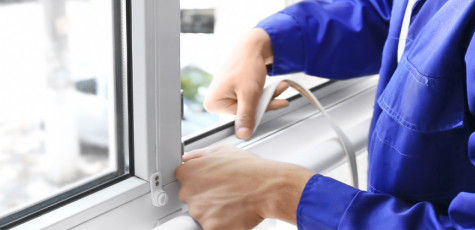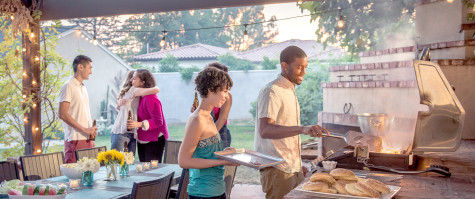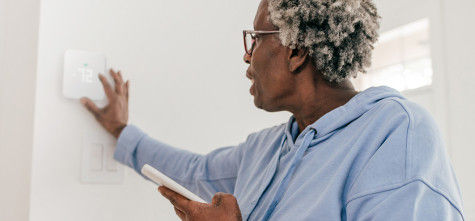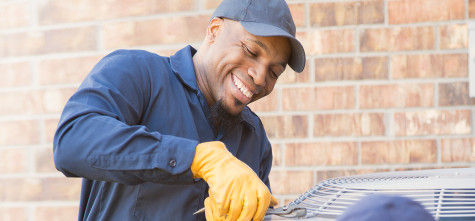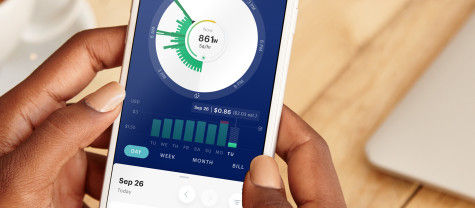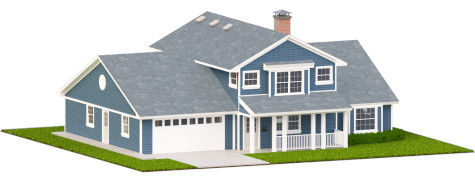Summer
Keep Energy Usage & Costs Down When Temperatures Rise
Managing your electric usage when the weather gets hot and humid is key to controlling your monthly energy costs.
4 Factors That Impact Summer Bills
(Hover Over Icons)

1. Energy Usage

2. Fluctuation in Temps

3. Household Changes

4. Monthly Billing Cycle
1. Energy Usage
Half the cost of your energy bill comes from cooling. Adjust your smart thermostat to pre-cool things before you get home to avoid continually running the A/C.
2. Fluctuation in Temps
When things heat up outside, set your thermostat at a temperature you find comfortable. Just remember, the smaller the difference between the indoor and outdoor temperatures, the lower your energy bill will be.
3. Household Changes
Air conditioners and fans kick into high gear during the hottest days of summer. An energy-efficient cooling system can save you a bundle.
4. Monthly Billing Cycle
Cycles can run from 26 to 35 days, so monthly bills may vary based on the number of days.
Safeguard Your Home This Summer
Safety is always our number one priority.
 Downed Power Lines & Tree Safety
Downed Power Lines & Tree Safety
You need to be mindful of the power lines and trees situated on and around your property. Practice safe protocols when having routine landscaping conducted or dealing with downed power lines.
If wires come down on your property, always assume they’re live and keep everyone at least 25 feet away. Report the problem to us immediately online. If it’s an emergency, call 9-1-1 immediately.
If you plan to trim trees near any power lines, we urge you to consult a professional tree-trimming service. Pole-to-pole overhead power lines carry high-voltage electricity that can seriously or fatally injure you.
 Practice Plug Safety
Practice Plug Safety
If you must use an extension cord, make sure it’s the right capacity for the tool or appliance with which it’s used. Use grounded (three-prong) extension cords for outdoor tools.
Make sure tools, appliances and lights are approved for outdoor use. Outdoor tools and appliances should have heavier wiring, special insulation and a three-prong, grounded plug.
When hanging lights, be sure to survey the area for overhead power lines and maintain at least a 10-foot distance.
Keep all electrical connections off the ground and hang sockets downward to prevent water from seeping into them.
Don’t run electrical cords through door or window openings where they can be damaged.
For added protection, plug outdoor lights into circuits protected by ground fault circuit interrupters (GFCIs).
Manage Your Monthly Bills
Pricing Options Explained
The more you know about your energy use, the more you can save.
Learn How to Lower Your DTE Energy Bills
Visit our virtual Interactive Energy-Efficient Home for room-by-room, energy-reducing tips that can help you save all summer long.
Download the free DTE Insight App to track your energy usage and find ways to save even more.
Shop the online DTE Marketplace for instant rebates on energy-efficient products for your home, such as LED bulbs, thermostats, smart outlets and more.
Summer
Keep Energy Usage & Costs Down When Temperatures Rise
Practical Tips for an Energy-Efficient Summer
Frequently-Asked Cooling Questions
If you’re struggling to pay your energy bill, call us at (800) 477-4747 to discuss your bill. We offer several payment assistance programs to help you pay your bill, and we’ll help find a payment plan that best suits your budget and energy needs. We also work with government agencies and community partners to find the right assistance programs for you over the long-term or in a crisis situation.
Yes. If you’re using a gas furnace for heating, the only electrical cost will be what is required to operate the fan motor and igniter. The igniter lights the flame for a moment when the furnace starts up.
During the summer, the closer your indoor temperature is to the outdoor temperature, the lower your energy costs will be. Keep your house warmer than normal when you are away, and then when you are home and need to cool down, set the thermostat to a setting as high as is comfortable for you. A programmable thermostat can help you automatically adjust to dial down or pre-cool your home.
You can save up to 10% a year on heating and cooling by adjusting your thermostat by 7 – 10 degrees for 8 hours a day.

